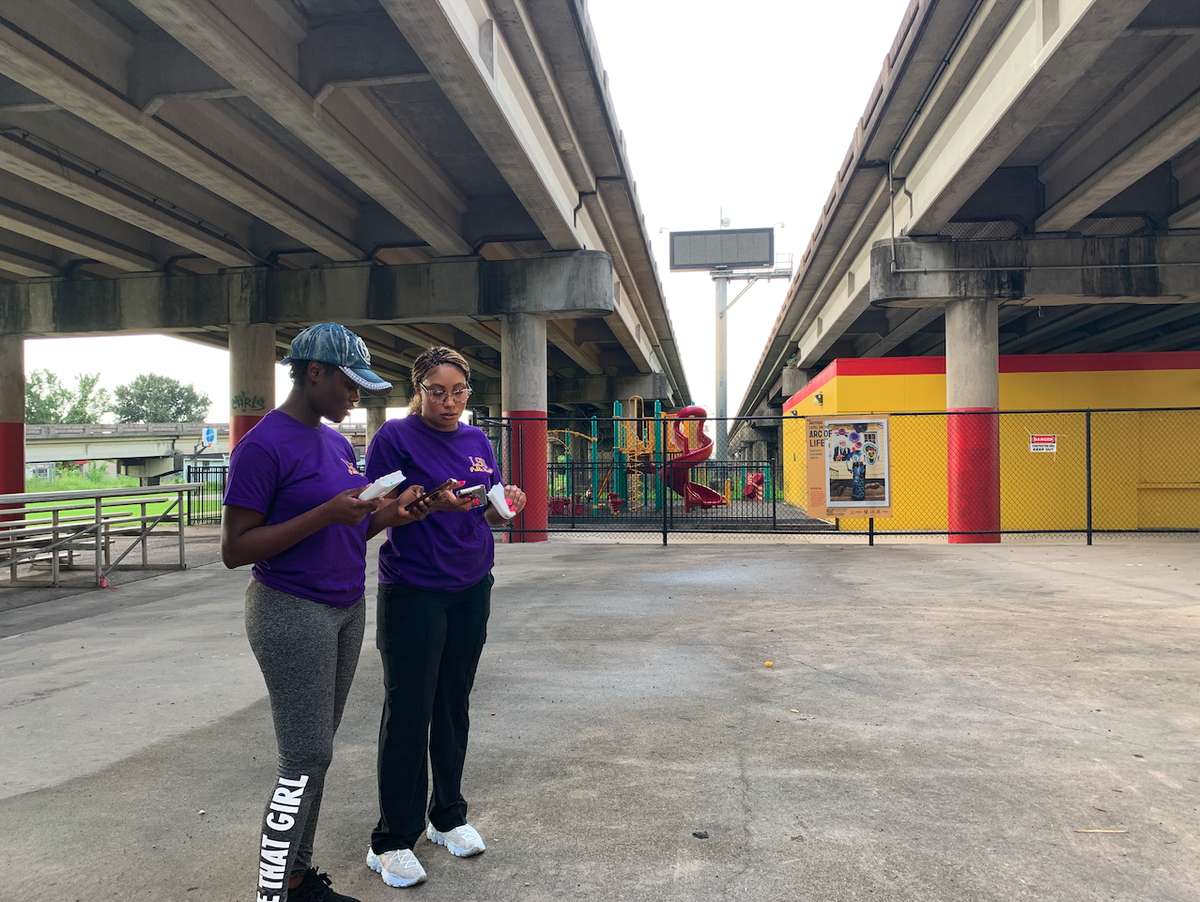
LSU Health New Orleans, with support from the US Environmental Protection Agency, is using the AirBeam to conduct research to better understand environmental hazards, exposures, and related health outcomes in the Claiborne Corridor. Their findings have been captured in the Claiborne Corridor Study.
In the heart of New Orleans’ historic Tremé neighborhood, a coalition of community leaders, researchers, and students are working to reclaim environmental justice under the shadow of the Claiborne Expressway. Opening in 1968 through a thriving Black economic and cultural district, the elevated highway has long been a source of harmful air and noise pollution—and a symbol of environmental racism. As described by urban planner and community advocate Amy Stelly, “The Claiborne Expressway is the poster child for urban highways that need to be removed . . . the highway just destroyed a key artery in the neighborhood.”

Prompted by long-standing community concerns, the Claiborne Avenue Alliance Design Studio joined forces with the LSU School of Public Health in 2016. Together, they launched a collaborative initiative that trains students from elementary school to graduate-level in traffic-associated air quality monitoring and environmental health. With boots-on-the-ground data collection, their efforts laid the groundwork for a successful EPA Community Air Monitoring Grant.
Thanks to this support, the Claiborne Corridor Project now uses HabitatMap’s AirBeam to monitor levels of fine particle pollution along the expressway. The switch to AirBeam allowed the team to scale up monitoring with a device that is accurate, affordable, and easy to use in all weather conditions. The AirBeam’s real-time data visualization has made it easy for students and community members to see how pollution levels shift with traffic patterns, weather, and other environmental factors. The use of AirBeams in the Claiborne Corridor project shows the AirBeam is more than just a sensor, it’s a powerful advocacy tool that can help spark conversations around science, health, and urban planning.
Preliminary data collected with AirBeam sensors revealed that fine particulate matter pollution at homes within 100 meters of the highway consistently exceed health-based standards. Communities living adjacent to the highway also experience higher rates of emergency room visits for respiratory illnesses and chest pain, coughing, dizziness, and chest pain, highlighting the public health consequences of long-term exposure. AirBeam monitoring has played a pivotal role in raising awareness among residents, policymakers, and stakeholders about the dangerous air quality conditions surrounding the expressway. Beyond local impact, the data has catalyzed a national dialogue, inspiring other communities to reexamine aging highway infrastructure and advocate for cleaner, healthier alternatives.
What began as a grassroots response to a public health crisis has grown into a nationally recognized project featured by NPR, ABC News, Nightline, the New York Times—and even acknowledged by President Biden. Yet for the community, the question remains: Should the expressway stay or go? Thanks to data collected with the AirBeam and the leadership of local residents, that decision can now be shaped by the lived experiences, health outcomes, and voices of the people most impacted.
To learn more about the Claiborne Corridor Project, check out the Nightline coverage of their work.
 Get AirBeam
Get AirBeam